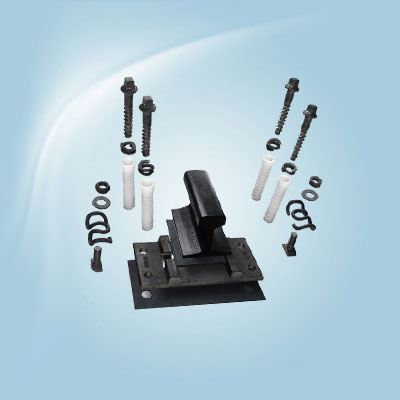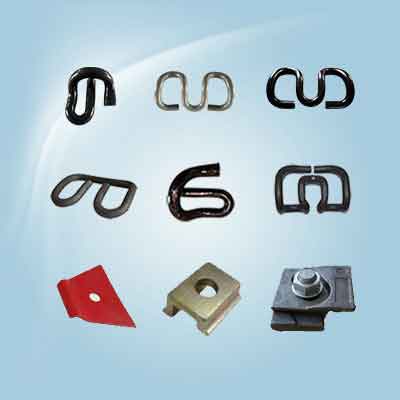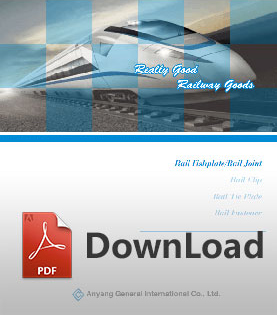How much do you know about rail grinding?

Rail grinding is the most effective way to maintain steel rail. Known from the railway track working principle, railway actually provides a continuous and elastic foundation for train operation. As the main part of railway track system, steel rail directly attach wheel bear a lot load from train. A part of load is absorbed by steel rail itself, and rest of load produce the rail wears like surface fatigue, crack, scratch, deformation and etc. Rail wears can result in reducing steel rail service life, more maintenance work, more maintenance cost and damaging railway running. So that rail grinding becomes a vital processing to the railway track.
Rail grinding types

Steel rail grinding is applied widely because of its high efficiency in the world. Generally, rail grinding is realized by rail grinding wagon. There are 4 strategies for different rail wears, such as corrective grinding, transitional grinding, preventive grinding and particular grinding.
Corrective grinding
Corrective grinding is mainly used to eliminate or reduce the shorts of online rail. In general, it adopts positive grinding processing, set the grinding amount in advance (0.5-6mm). And then, interval of working is relatively long, which depends on the severity of shorts.
Corrective grinding is not an economical method, because it requires removing amount of metal on steel rail, and reducing the working life by costing too much grinding processing. But, for ensuring steel rail have more longer useful life, corrective grinding is very necessary, especially in the time of tough budge. Besides, steel rail with corrective grinding will lead to speed limit of railway.

Transitional grinding
Transitional grinding is a long term strategy (3-6 years) for steel rail. Its main function is transform corrective grinding to preventive grinding. This kind of grinding should go through several times grinding cycle, especially for nonstandard steel rail maintenance. However, from the view of preventive grinding cost, transitional grinding is a better choice for rational utilization of limited resources. Compared to corrective grinding, transitional grinding require less metal remove. For example, grinding amount is between 0.3mm to 1.0mm; grinding amount of each grinding cycle decrease regularly.
Functions of transitional grinding as following:
- Reduce the steel rail wear like rail corrugation and contact fatigue.
- Realize the prospective shape of rail profile, and decrease the development rate of breakage.
Preventive grinding

The main surface defect of steel rail is correct by corrective grinding and transitional grinding. Next step is preventive grinding, also called periodic grinding. It is used to clear or control the surface defect of steel rail, keep good performance and appearance of steel rail. Preventive grinding usually require little metal (0.2-0.3 mm), and grinding processing is more frequent or controllable.
- Preventive grinding is very economical, it reduces the usage of grinding tool and mostly prolongs the working life of steel rail. Grinding cycle is based on the problem of steel rail
- Passing tonnage;
- Main track type and goods types, static wheel load and driven wheel load;
- Steel rail types;
- Railway track types, mostly divided by curvature of curve, superelevation and steel rail’s supporting conditions;
- Running type, mainly refers to running speed.
Particular grinding
Particular grinding is a method for special purpose beside three types of grinding we mentioned above.
- Realize special shape of rail profile. Increase the usage time in the short-term by making grinding amount over wear limit of steel rail head. For example, when the contact area reach 20-30mm between rail and wheel, special grinding can remove the metal of wheel and steel rail, and grind inner side of rail gauge. One more thing, grinding amount should be matched with wheel profile of main track in the railway line.
- Realize special shape of rail profile to reduce the rate of wheel in the air. In order to move the rail contact area along the wheel tread, grind the shape of rail profile according to the railway direction. For example, width of contact area is 20-30mm, after running several miles, contact area may be moved from rail head to inner side of rail gauge.
- Realize smooth rail contact surface to reduce noise in the contact area. This special grinding strategy is widely applied in the high-speed railway and urban rail transport. After special grinding, roughness of rail surface is less than 12.5μmRA, but the best rail surface roughness is 4-6μmRA, and largest grinding width is 4-6mm. This special grinding require rail hardness, effect of low hardness steel rail will be erased by wheel.
Advantages of rail grinding

- Increase 50%-100% useful life of steel rail (5 - 8 years).
- Decrease the risk of rail failure.
- Make steel rail and wheel have correct contact, reduce the snake movement of train.
- Decrease the deterioration rate of wheel, railway fasteners (rail fastening system, railway sleeper, etc.) and track geometry.
- Give possibility of higher train operation speed.
- Reduce rolling noise and vibration and control rail corrugation.
- Save the maintenance cost of railway fasteners, railway track system.
- Reduce the locomotive fuel consumption and cost of wheel repair.
In conclusion, rail grinding reduces the defect of steel rail. It is a great way to protect steel rail and whole railroad track system. In addition to, there is many other railroad fasteners bear the load from train and have relative defect like steel rail, including railway sleeper, rail clip, railroad spike, railway switch, rail pad and so on. How to maintain these kinds of rail components? More details at How to maintain rail clips? How to install and maintain railway switch? How to protect railroad spike from corrosion?
- Rail Fasteners
- rail fastening system
- rail clip
- railroad spike
- Track bolt
- rail shoulders
- rail anchor
- rail clamp
- tie plate
- Rail Pad
- rail insulator
- rail plastic dowel
- other rail fasteners
- Railway Switch
- SKL series rail fastening system
- Chinese standard rail fastening system
- screw spikes
- Crane rail fastening system
- K type rail clip for Africa
- Hey-Back Rail Fastening
- rail fasteners for Mexican market
- Ss25 screw spike
- Ss35 rail sleeper screw spike
- Ss8 screw spike
- coach screw
- Crane Rail Clip
- Rail Joints (Fishplate)
- Steel Rail
- Railway Sleeper
 rail clip
rail clip
 rail joints
rail joints

 Español
Español English
English
